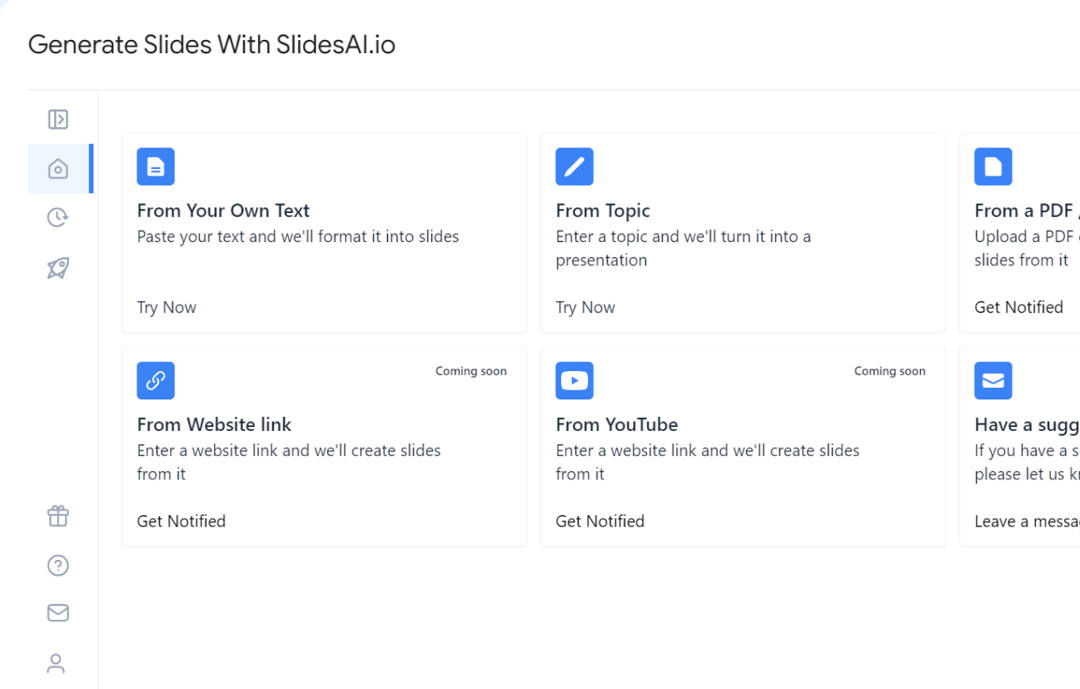Determining the ideal number of slides for a 60-minute presentation can be a challenge.
Too few slides might leave your audience feeling uninformed, while too many could lead to a rushed and overwhelming experience. The key lies in finding a balance that allows you to effectively convey your message without overwhelming your audience.
In this blog post, we will discuss some factors to consider when deciding how many slides to include in your 60-minute presentation.
How Many Slides for 60 Minutes Presentation?
A common rule of thumb is to aim for approximately 1-2 minutes per slide. This means that for a 60-minute presentation, you should have roughly 30-45 slides.
However, this is just a general guideline, and the actual number of slides can vary depending on factors like the complexity of your content, the audience’s familiarity with the topic, and your preferred speaking style.
Guy Kawasaki, a renowned entrepreneur and author, suggests a different approach. He proposes the “10/20/30 rule,” which states that presentations should have:
- 10 slides maximum
- 20 minutes in length
- 30-point font minimum
While this rule might seem restrictive, it can be helpful in ensuring a focused and impactful presentation.
The ideal number of slides ultimately depends on your specific needs. If you have a lot of complex information to convey, you might need more slides. On the other hand, if you have a simple message, fewer slides might be sufficient.
When creating your presentation, keep these tips in mind:
- Use Clear and Concise Bullet Points: Avoid long sentences and paragraphs on your slides.
- Limit Text: Let your visuals do the talking.
- Use High-quality Images and Graphics: Ensure your visuals are visually appealing and relevant to your content.
- Maintain a Consistent Design: Use a consistent color palette, font, and layout throughout your presentation.
- Practice Your Presentation: Rehearse your presentation to ensure a smooth delivery and to familiarize yourself with your slides.

Factors Affecting Presentation Time
The amount of content in your presentation is a major factor in determining how long it will take to deliver. A presentation with 15 slides may only take 20 minutes, while a presentation with 50 slides could take an hour or more.
The complexity of the information on each slide is also a factor. Slides with lots of text or complicated visuals will take longer to explain than slides with simple visuals and bullet points.
Another factor to consider is your speaking style. If you are a fast talker, you may be able to deliver your presentation in less time than someone who speaks slowly.
However, it is important to speak at a pace that is easy for your audience to understand. Lastly, if you anticipate questions from the audience, factor in additional time for a Q&A session after your main presentation.
Create Presentations Easily in Google Slides and PowerPoint
15M+Installs

Presentation Tips to Stay on Time
- Plan Your Time: Decide how much time you’ll spend on each slide and stick to it to stay on schedule.
- Practice Your Presentation: Go through your presentation ahead of time to spot areas where you might run out of time or need to adjust your pacing.
- Use a Timer: Have a timer handy during your presentation to help you stay on track and avoid going over your allotted time.
- Watch Your Pace: Speak clearly and at a moderate speed. Avoid speaking too quickly or getting lost in unnecessary details.
- Skip Slides if Needed: If you’re running short on time, it’s better to skip a few slides than rush through everything. Focus on covering the key points.
- Stay on Topic: Keep your presentation focused on the main points. Avoid going off-topic or diving into unrelated details.
Build Stunning Slides in Seconds with AI
- No design skills required
- 3 presentations/month free
- Don't need to learn a new software

Closing Thoughts
Finding the right number of slides for a 60-minute presentation is all about balance. Aim for 30-45 slides to keep your message clear and engaging, but adjust based on your content and speaking style.
Remember, the goal is to communicate your message without overwhelming your audience. Practice and adjust as needed to ensure a smooth and impactful presentation.
Also read other informational posts:
- How Many Slides for a 5-minute Presentation?
- How Many Slides for a 15-Minute Presentation?
- How Many Slides in a 20-Minute Presentation?
- How Many Slides For a 30-minute Presentation?
- How Many Slides in a 45-Minute Presentation?
Frequently Asked Questions
How can I effectively time my PowerPoint presentation?
Timing your presentation is crucial for keeping your audience engaged. Our blog provides detailed steps and tips on how to achieve the perfect pace.
How much time does it typically take to prepare a 5-minute presentation?
The time required to create a 5-minute presentation can vary depending on factors like your familiarity with the topic and the complexity of your slides. However, a good estimate is around 1-2 hours.
How long should I allocate for a 10-minute presentation?
For a 10-minute presentation, you might need approximately 2-3 hours to develop your content, design your slides, and practice your delivery. Check out how many slides in 10-minute presentation to learn more about how it’s done.
What’s a reasonable timeframe for a 20-minute presentation?
A 20-minute presentation generally requires around 4-6 hours of preparation, including research, writing, and slide creation.
How much time should I invest in a 30-minute presentation?
A 30-minute presentation typically demands 6-8 hours of preparation to ensure a well-structured and informative delivery.
What’s a good estimate for a 45-minute presentation?
For a 45-minute presentation, you might need to allocate 8-10 hours to thoroughly research, develop, and refine your content.
How long should I plan for a 60-minute presentation?
A 60-minute presentation often requires 10-12 hours of preparation to ensure a comprehensive and engaging experience for your audience.





